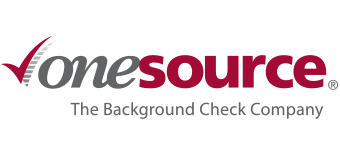Managing the Challenges and Changes of Remote Hiring
Remote recruiting is tricky. It’s relatively new territory for recruiters and job seekers and it comes with different expectations, restrictions and rules. While not every company is hiring right now, those who are must adjust their processes.
But sometimes in hiring, adaptability is the name of the game. Meeting applicants where they are and adjusting accordingly can help bring out the best candidates, no matter how strange the hiring circumstances. The being said, remote hiring isn’t easy—here are a few challenges you may encounter and how One Source can help.
Hiring without meeting in person
Face to face interaction with candidates has been an essential part of the hiring process. By getting an applicant in your work environment and seeing how they interact with your team, you can tell a lot about how they’ll fit in to your staff. However, remote recruiting and hiring does not offer the luxury of in-person interviews. So how do we adapt?
One way to customize the hiring process for an online space is to lean on the technologies that you’re already using. Zoom, Google Meet and other video conferencing services are an easy way to connect face to face at any time. Generally through the hiring process, you may only speak with candidates a few times before you make a decision. These video chat apps make it easy to have more frequent conversations with applicants. You can invite them to chat with your whole team and develop a sense of their personality through shorter, more frequent conversations.
You can also lean on other hiring resources like background checks and work samples to better understand what a candidate is like. One Source’s online portal makes it easy to keep reports in one place and refer to them whenever necessary. So, despite the lack of in-person communication, online resources allow you to compile a relatively complete picture of who you’re interviewing.
Notice and address gaps in your hiring process
While unconventional, turning your hiring process on its head by moving it online can be a good way to identify gaps and issues in your typical hiring process. Remote hiring may intensify underlying inefficiencies and frustrations. Do you need to revise your application review process? Should you ask different questions and measure different skills? Does your screening process align with your objectives? You may find yourself asking any of these questions and more as you continue remote hiring.
Don’t be afraid to think on your feet as you navigate new hiring methods. While your team should always be aligned and intentional, there has never been a better time to try new things and solve problems in creative ways. Patching up inefficiencies in your hiring will make your staff stronger in the long run.
If you feel like your background check process isn’t working toward your goals, contact us at One Source and we’ll help you build a screening process tailored to your needs. Everyone is managing change right now, so we’re here to make your hiring that much easier.
